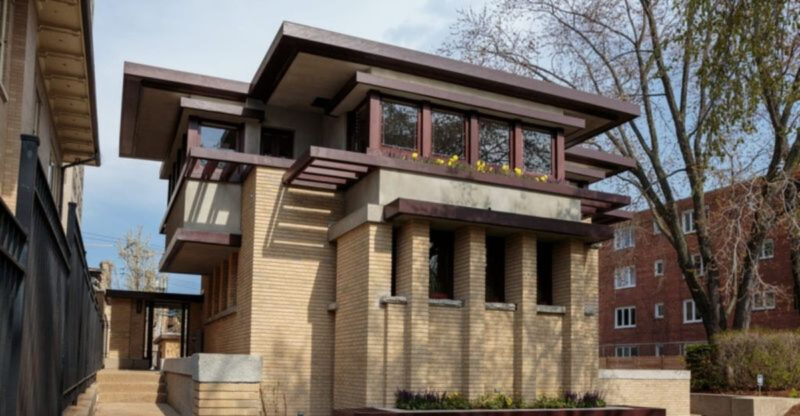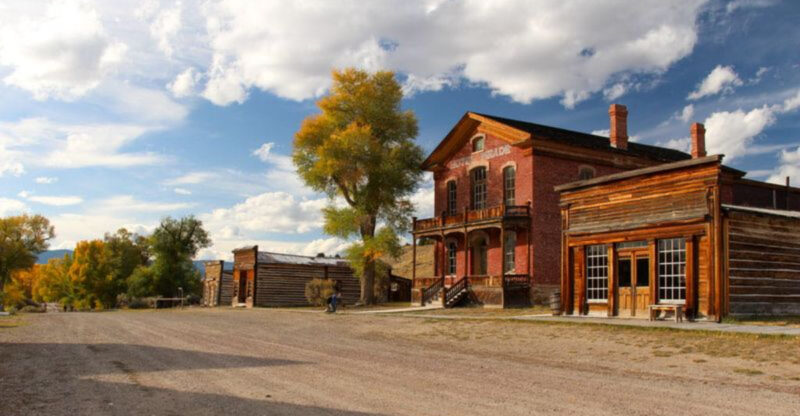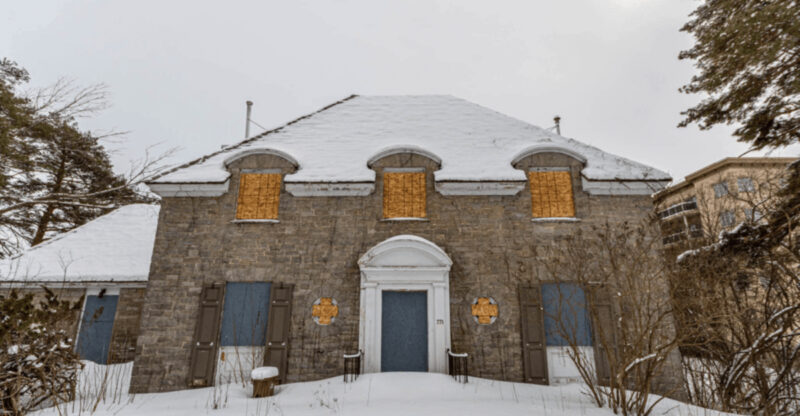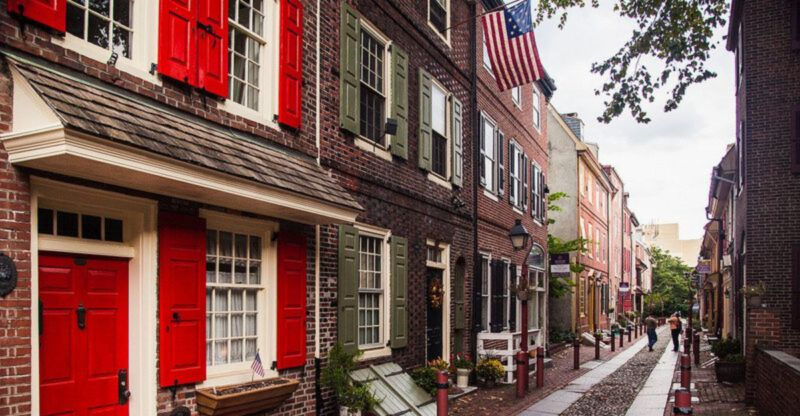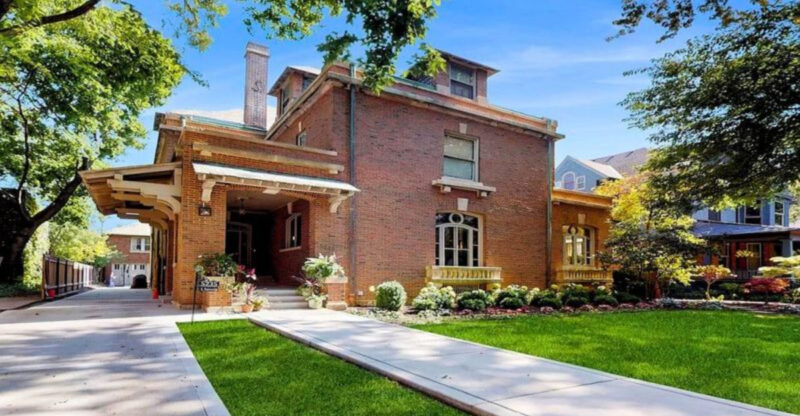You Can Actually Tour The 14 Most Opulent Gilded Age Homes In America
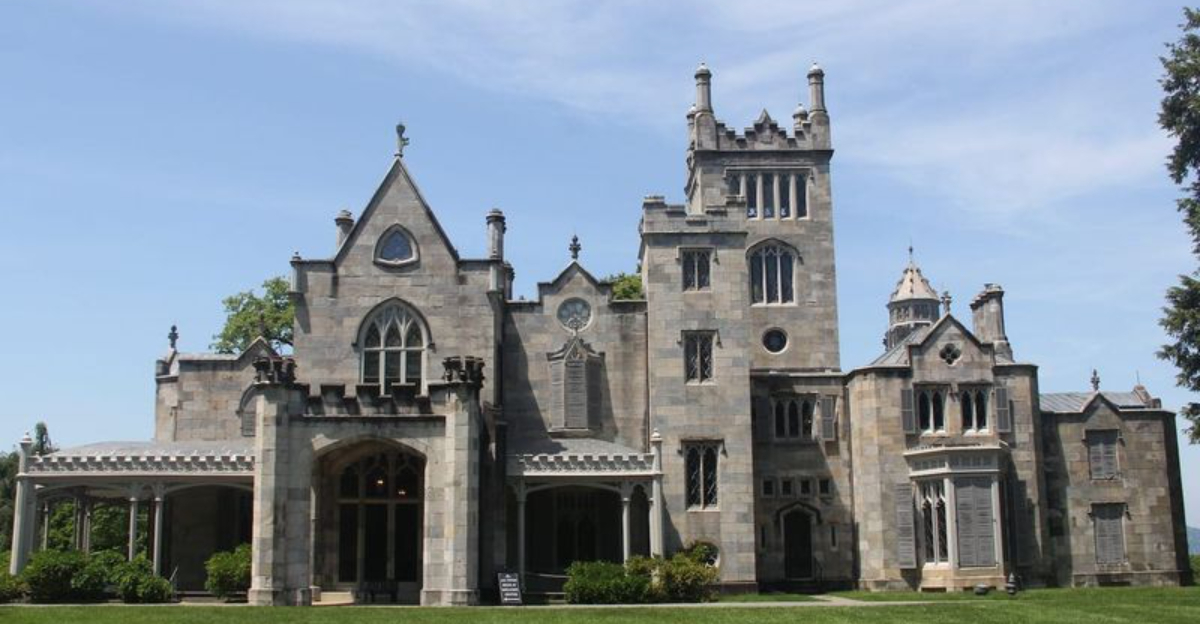
America’s Gilded Age, roughly spanning from 1870 to 1900, was a time of incredible wealth and extravagance for the nation’s elite.
Wealthy industrialists and business tycoons built magnificent mansions that showcased their fortune and status.
Today, many of these opulent homes have been preserved as museums, allowing us to step back in time and experience the lavish lifestyle of America’s aristocracy.
1. Vanderbilt Mansion: A Hudson Valley Treasure
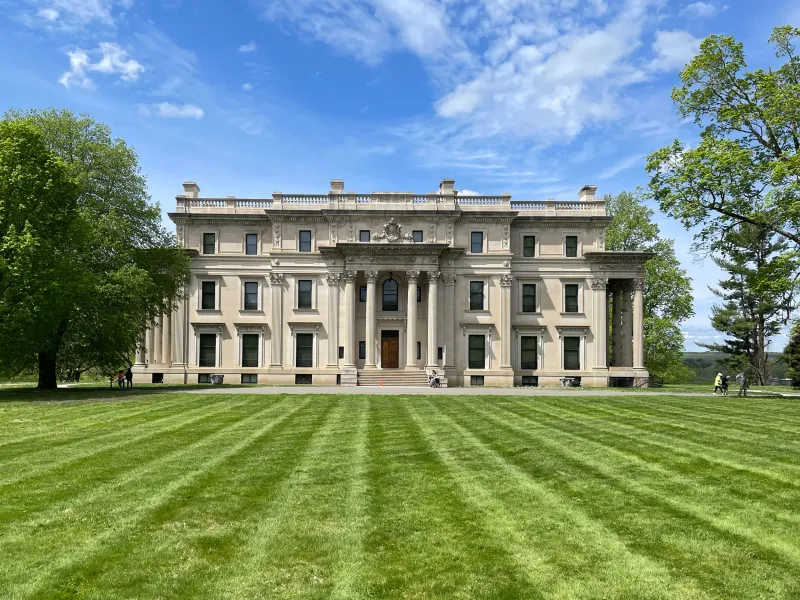
Standing majestically along the Hudson River in Hyde Park, New York, the Vanderbilt Mansion represents the pinnacle of Gilded Age luxury. Railroad magnate Frederick Vanderbilt used this 54-room mansion as his country retreat, filling it with European antiques and art.
The mansion’s neoclassical design features marble floors, gilded ceilings, and intricate woodwork that will leave you speechless. Tours take you through the formal gardens, elegant reception rooms, and even the servants’ quarters.
What makes this estate special is how perfectly preserved it remains like stepping into a time capsule from 1899. The National Park Service maintains the property, ensuring future generations can experience this remarkable piece of American history.
2. Biltmore Estate: America’s Largest Private Home
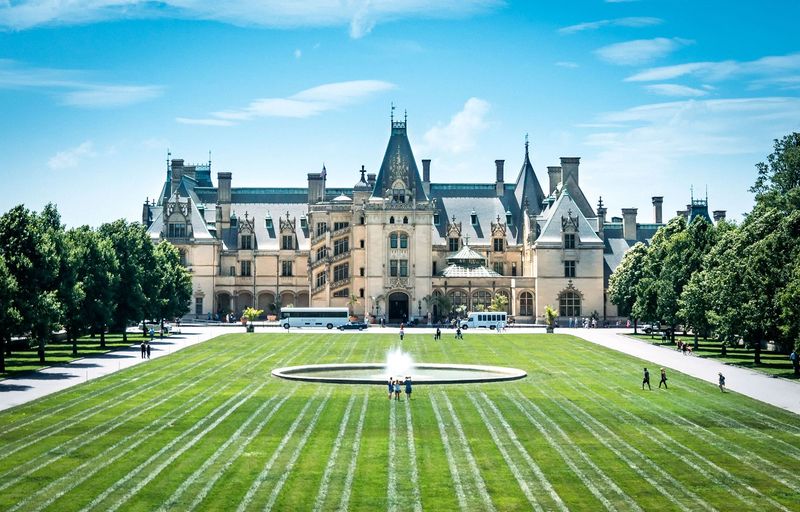
George Vanderbilt’s mountain retreat in Asheville, North Carolina remains the largest privately-owned house in America with a staggering 250 rooms. Built in 1895, this French Renaissance château sits on 8,000 acres of meticulously landscaped gardens designed by Frederick Law Olmsted.
Touring Biltmore feels like exploring a European castle transported to the Blue Ridge Mountains. The banquet hall features a 70-foot ceiling, while the library houses over 10,000 volumes. Don’t miss the indoor swimming pool, bowling alley, and 16th-century tapestries adorning the walls.
Unlike many Gilded Age mansions, Biltmore remains in the Vanderbilt family, operating as a self-sustaining tourist attraction with a winery, hotel, and restaurants on the grounds.
3. Hearst Castle: California’s Coastal Palace
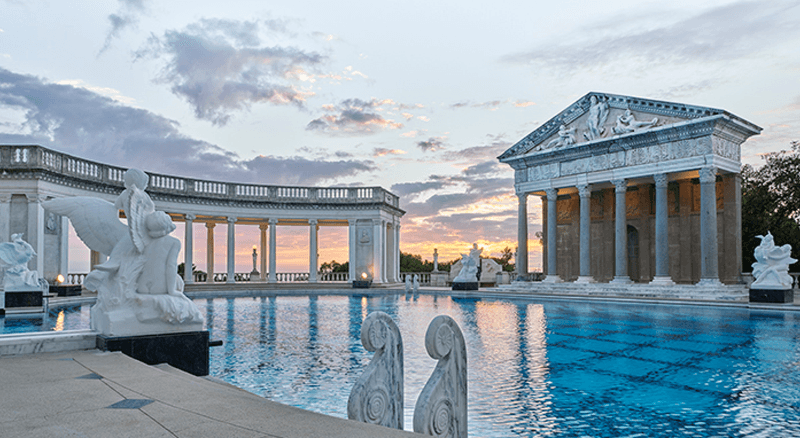
Perched high above the Pacific Ocean in San Simeon, Hearst Castle was publishing tycoon William Randolph Hearst’s fantastical retreat. Architect Julia Morgan spent nearly 28 years creating this Spanish-Mediterranean masterpiece with 165 rooms and 127 acres of gardens, terraces, and pools.
The Neptune Pool, with its ancient Roman temple façade and alabaster lamps, looks straight out of a movie set. Inside, you’ll find entire European ceilings, fireplaces, and doorways that Hearst purchased and shipped to California. His personal zoo once housed exotic animals like zebras and giraffes.
Celebrity guests like Charlie Chaplin, Cary Grant, and Winston Churchill frequently visited this California State Park for lavish parties during Hollywood’s Golden Age.
4. The Breakers: Newport’s Crown Jewel
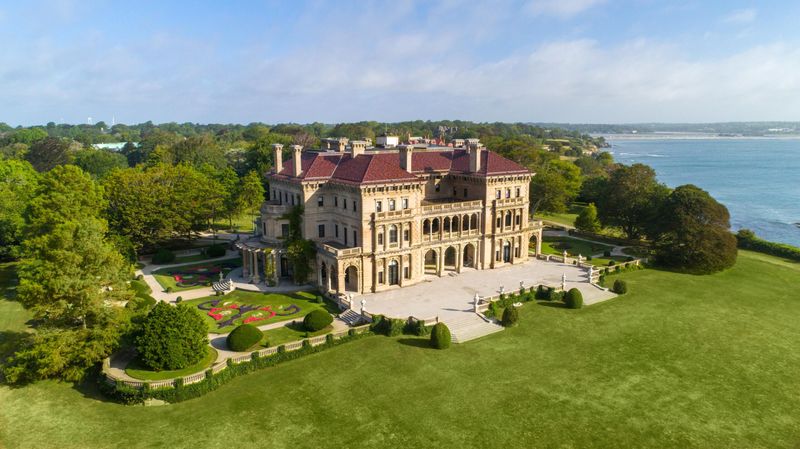
If walls could talk, The Breakers would tell tales of America’s most elite social gatherings. Cornelius Vanderbilt II commissioned this 70-room Italian Renaissance-style palazzo in Newport, Rhode Island as his summer “cottage.” Completed in 1895 at a cost of $12 million (equivalent to over $400 million today), this mansion epitomizes Gilded Age excess.
The Great Hall features 50-foot ceilings adorned with platinum leaf, while the Morning Room showcases Chinese porcelain panels worth millions. Most breathtaking is the two-story dining room with alabaster columns and chandeliers.
Standing dramatically on a cliff overlooking the Atlantic Ocean, The Breakers attracts over 400,000 visitors annually who come to experience the ultimate symbol of Vanderbilt wealth and prominence.
5. Marble House: A Monument to Marble
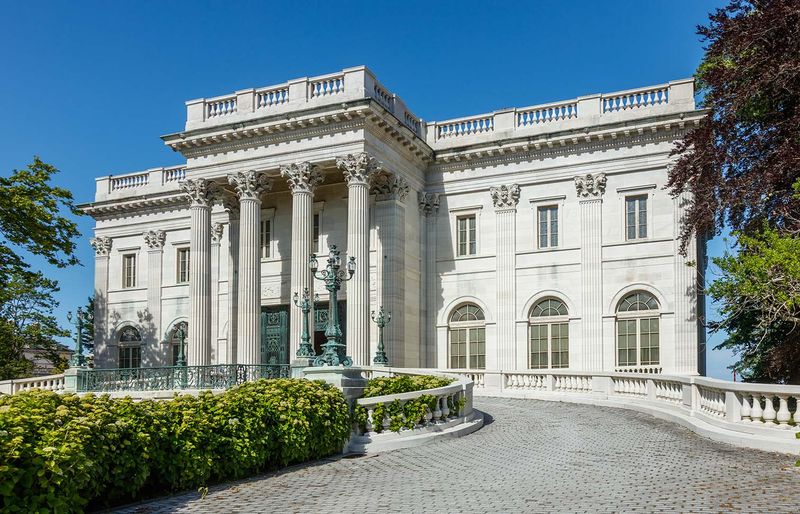
Alva Vanderbilt demanded nothing less than extraordinary when building her Newport summer residence in 1892. Marble House cost $11 million to construct (approximately $372 million today), with $7 million spent on 500,000 cubic feet of marble alone.
The Gold Room, inspired by Versailles’ Hall of Mirrors, features 22-karat gold leaf covering every surface. Tours reveal the fascinating story of Alva herself a controversial society figure who later became a prominent women’s rights activist after divorcing William K. Vanderbilt.
Perhaps most impressive is the Chinese Tea House on the property’s cliff edge, where Alva hosted suffragette rallies. This architectural gem represents both the excesses of the Gilded Age and one woman’s determination to make her mark in a male-dominated society.
6. Rosecliff: The Party Palace of Newport
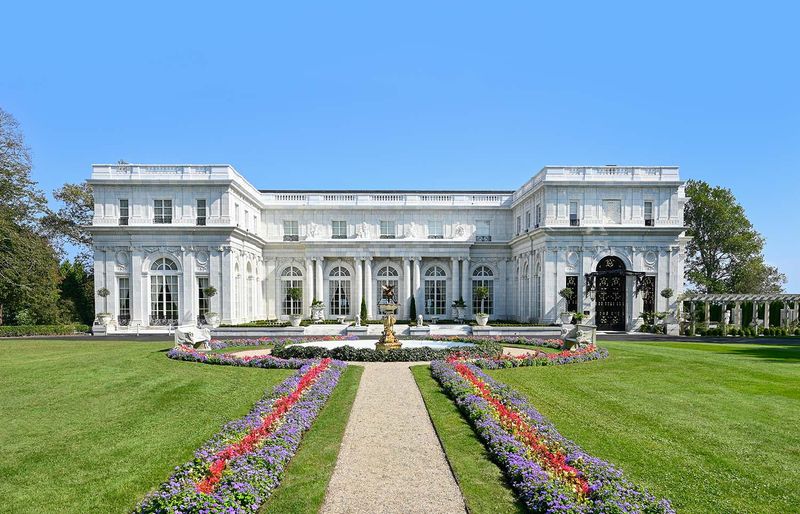
Commissioned by silver heiress Theresa Fair Oelrichs in 1899, Rosecliff was designed specifically for entertaining on a grand scale. This Newport mansion’s heart-stopping feature is its 40-foot-high ballroom the largest in Newport where Mrs. Oelrichs hosted legendary parties including her famous “Bal Blanc” where guests dressed entirely in white.
Modeled after the Grand Trianon at Versailles, Rosecliff’s gleaming white terracotta façade and sweeping staircases have made it a favorite filming location for movies like “The Great Gatsby” and “27 Dresses.” The heart-shaped staircase in the entry hall creates an unforgettable first impression.
Though less opulent inside than some Newport mansions, Rosecliff’s elegant proportions and spectacular ocean views capture the carefree spirit of Gilded Age summer society.
7. Dumbarton Oaks: Georgetown’s Hidden Gem
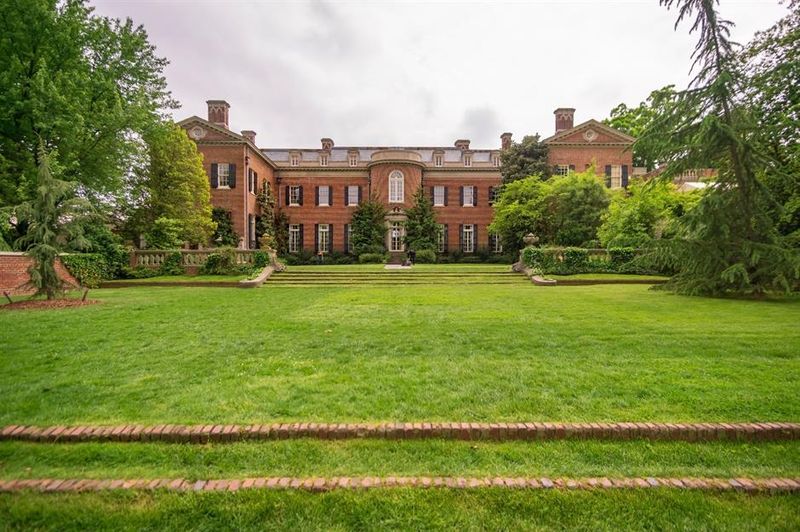
Nestled in Washington D.C.’s Georgetown neighborhood, Dumbarton Oaks offers a more intimate glimpse into Gilded Age refinement. This Federal-style mansion was transformed in the early 20th century by diplomat Robert Woods Bliss and his wife Mildred into a showcase for their world-class art collections.
The Music Room dazzles with its Renaissance tapestries and El Greco paintings, while the Byzantine Gallery houses priceless artifacts. Most breathtaking are the terraced gardens designed by landscape architect Beatrix Farrand considered her masterpiece with themed outdoor “rooms” flowing seamlessly into one another.
History was made here in 1944 when diplomats met at Dumbarton Oaks to draft the United Nations charter. Today, Harvard University maintains this cultural landmark as a research institute and museum.
8. Ten Chimneys: A Theatrical Estate

Broadway legends Alfred Lunt and Lynn Fontanne created their magical summer retreat in Genesee Depot, Wisconsin, naming it for the ten chimneys that grace the property. Though built later than most Gilded Age mansions (completed in the 1930s), Ten Chimneys exemplifies the same dedication to craftsmanship and artistry.
Hand-painted murals cover the walls, while custom furniture and theatrical memorabilia fill every room. Famous visitors included Noël Coward, Katharine Hepburn, and Laurence Olivier, who came to relax and rehearse away from Broadway’s spotlight.
What makes Ten Chimneys extraordinary is how personal it feels this wasn’t just a showplace but a beloved home. The kitchen still contains Lynn’s handwritten recipes, while Alfred’s passion for gardening is evident in the meticulously maintained grounds.
9. Grey Gardens: From Ruin to Restoration
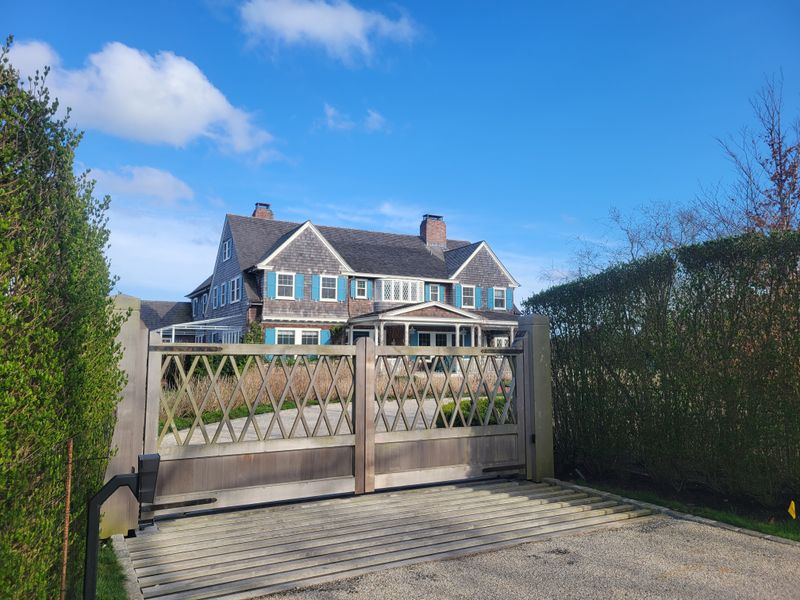
Grey Gardens offers a fascinating twist on the typical Gilded Age mansion tour. Located in East Hampton, New York, this 1897 shingle-style cottage became infamous in the 1970s when documentary filmmakers discovered Edith Bouvier Beale and her daughter “Little Edie” (relatives of Jackie Kennedy) living in squalor amid its crumbling grandeur.
After the documentary shocked America, the estate was purchased and meticulously restored to its original elegance. The walled gardens that gave the property its name have been replanted according to historic plans.
Though privately owned today, Grey Gardens occasionally opens for special tours, allowing visitors to see how this once-derelict mansion has been transformed while learning about its colorful past and the eccentric women who called it home despite its decay.
10. Oheka Castle: Long Island’s French Chateau
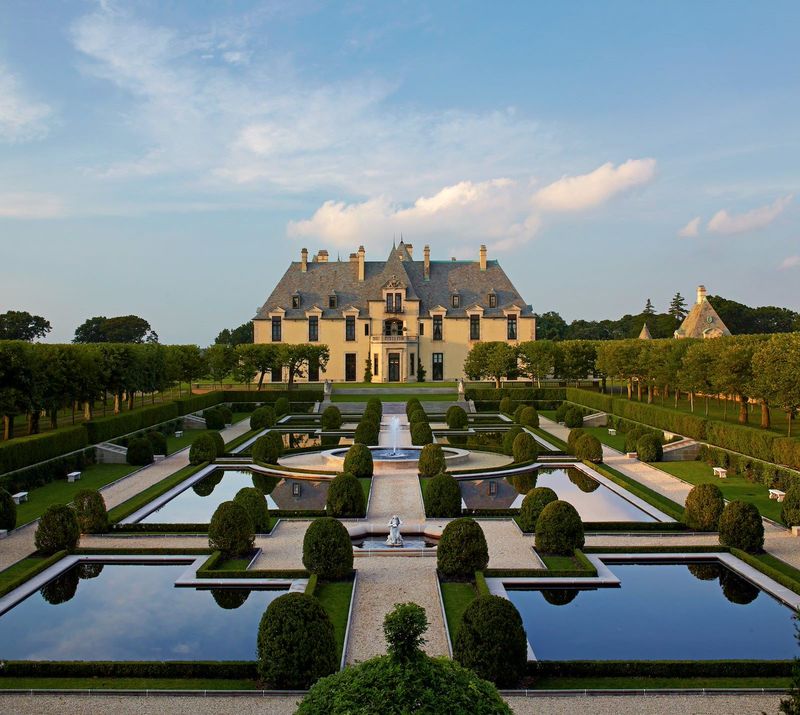
Rising from the highest point on Long Island, Oheka Castle was financier Otto Hermann Kahn’s defiant response to being excluded from elite social clubs. Completed in 1919 at a cost of $11 million (about $158 million today), this 127-room French-style château remains the second-largest private home ever built in America.
The formal gardens, designed by the Olmsted Brothers, feature reflecting pools and carefully manicured hedges in geometric patterns visible from the mansion’s upper floors. Inside, the grand staircase and ballroom hosted legendary parties where guests included heads of state and Hollywood stars.
After falling into disrepair, Oheka was painstakingly restored and now operates as a luxury hotel. You might recognize it from Taylor Swift’s “Blank Space” music video or as inspiration for the movie “Citizen Kane.”
11. The Elms: Inspired by French Elegance
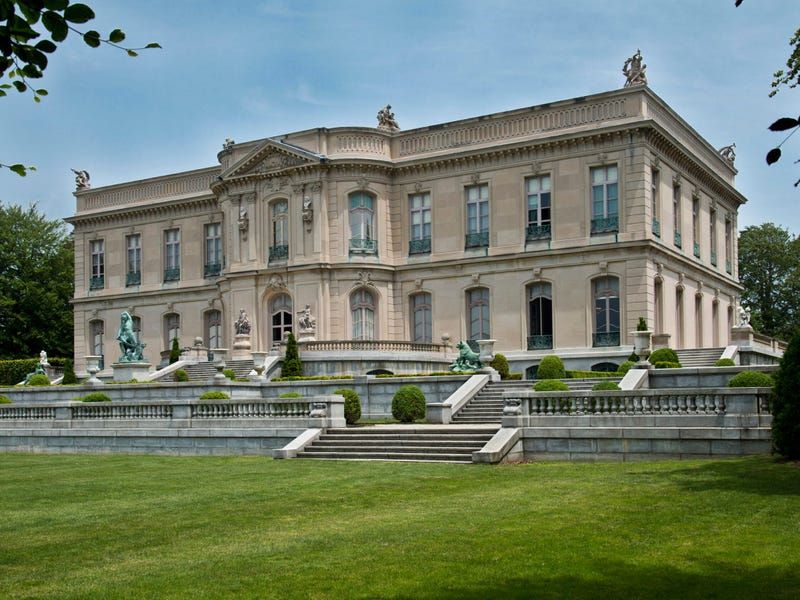
Coal magnate Edward Berwind commissioned The Elms in Newport as a summer residence modeled after the mid-18th century French château d’Asnières. Completed in 1901, this limestone palace cost approximately $1.4 million (about $45 million today) and was among the first homes in America to be fully electrified.
The most remarkable feature is the garden, with its marble pavilions, fountains, and terraces designed to create an impression of endless space. Inside, the house showcases Berwind’s exceptional collection of Renaissance ceramics, 18th-century French and Venetian paintings, and Oriental jades.
Don’t miss the basement tour, which reveals the ultra-modern coal-fired heating plant, ice-making room, and laundry facilities that made this house a marvel of early 20th-century technology while remaining hidden from guests’ view.
12. The Crane Estate: Seaside Splendor
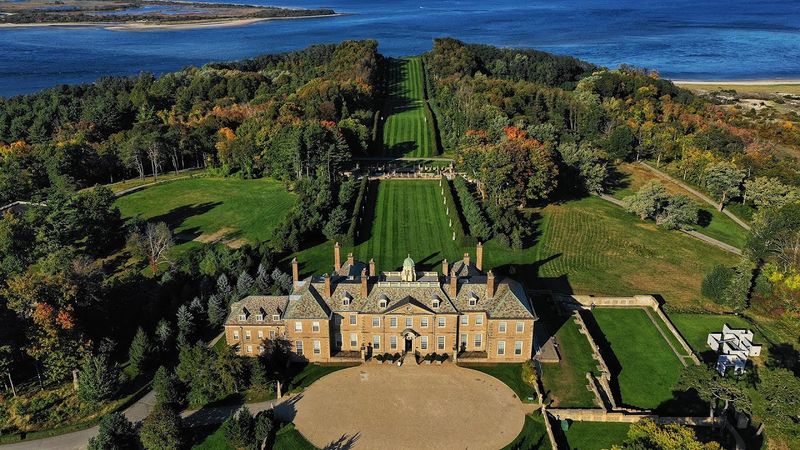
Perched dramatically above Crane Beach in Ipswich, Massachusetts, this 59-room Stuart-style mansion was the summer home of plumbing magnate Richard T. Crane Jr. The “Great House” sits at the end of a half-mile-long landscaped drive that creates an unforgettable approach to this coastal palace.
The Grand Allée, a spectacular grass staircase stretching from the house to the ocean, is flanked by statues and provides breathtaking views of the Atlantic. Inside, the house features a remarkable collection of period furnishings, including 17th-century Flemish tapestries and Italian marble fireplaces.
The 2,100-acre property includes pristine beaches, maritime forests, and dunes that you can explore after touring the mansion. This ecological diversity makes Crane Estate unique among Gilded Age properties offering natural beauty alongside architectural grandeur.
13. Lyndhurst: Gothic Revival Masterpiece
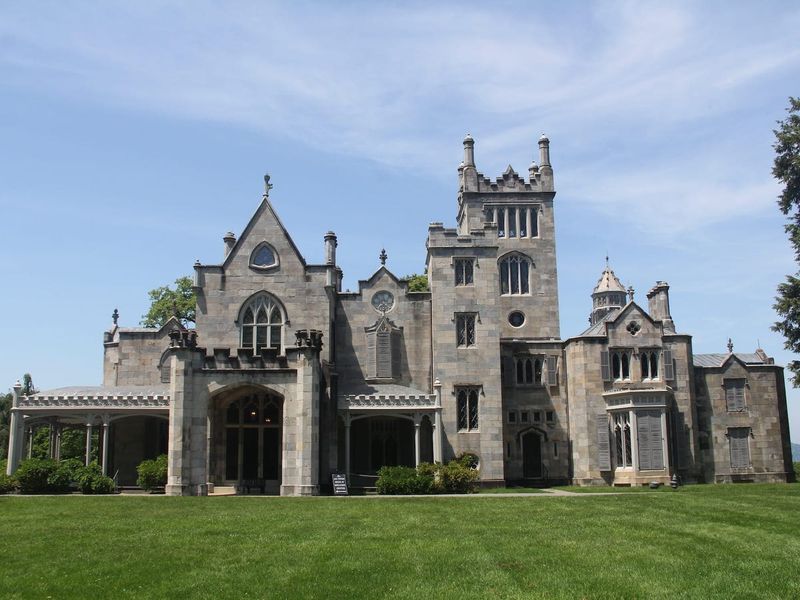
Lyndhurst stands as America’s finest Gothic Revival mansion, its castle-like silhouette rising dramatically above the Hudson River in Tarrytown, New York. Railroad tycoon Jay Gould purchased this architectural gem in 1880, adding his own touches to the already distinctive home designed by Alexander Jackson Davis.
The asymmetrical exterior with pointed arches, towers, and finials creates a romantic, medieval atmosphere. Inside, original furnishings remain intact, including elaborate carved furniture designed specifically for the house. The art gallery displays Gould’s collection of European paintings in their original setting.
Surrounded by 67 park-like acres, Lyndhurst’s grounds feature a remarkable cast-iron conservatory, rose garden, and sweeping lawns with views that inspired the Hudson River School painters. Film buffs might recognize it from several Dark Shadows movies.
14. Villa Vizcaya: Miami’s Italian Renaissance Palace
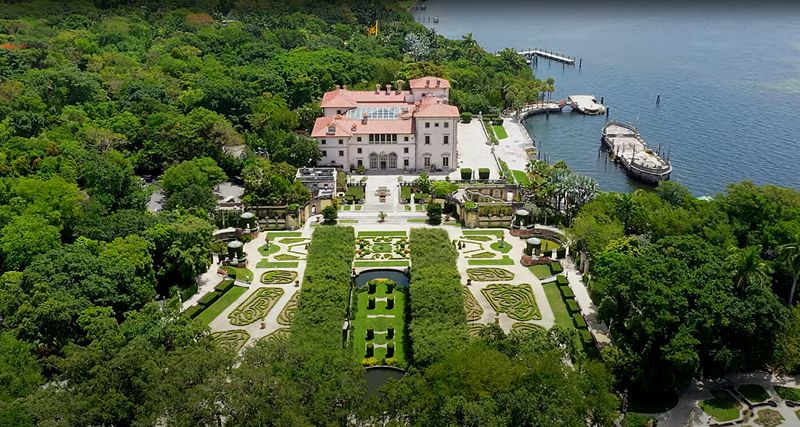
Industrialist James Deering created his subtropical paradise on Biscayne Bay, combining European grandeur with Miami’s lush landscape. Completed in 1916, Villa Vizcaya represents a unique blend of Italian Renaissance architecture adapted to Florida’s climate featuring open-air courtyards and loggias that capture ocean breezes.
The 34-room main house contains over 2,500 art objects and antique furnishings collected from Europe. Most spectacular is the central courtyard with its ancient Roman sculptures and fountain. The 10 acres of formal gardens include a maze garden, secret garden, and the iconic Stone Barge a breakwater carved to resemble an ornate Venetian ship.
Hurricane shutters disguised as decorative elements and an early air conditioning system show how this mansion brilliantly adapted European luxury to tropical conditions while creating one of America’s most photogenic estates.


